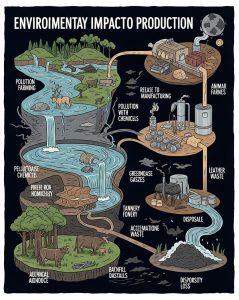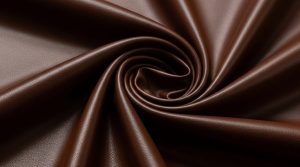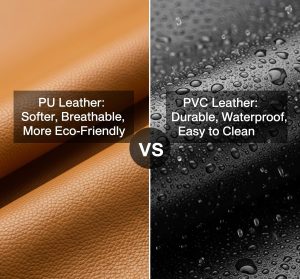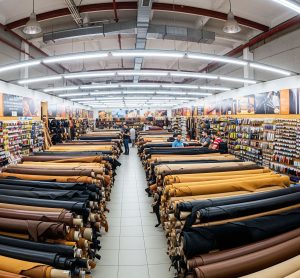
In a world increasingly focused on sustainability, the materials we choose matter more than ever. Enter マイクロファイバー・レザー, a synthetic alternative that has been touted as an eco-friendly solution to traditional leather. But how green is it really? With its animal-free production process, lower water usage, and reduced chemical waste, microfiber leather presents a promising future for industries like fashion, automotive, and furniture. Yet, as with any material, its environmental impact is complex. In this article, we take a closer look at microfiber leather’s eco footprint, examining whether it truly stands as a sustainable alternative. Can this innovative material help reduce our environmental impact while maintaining durability and style? Let’s dive in and explore what makes microfiber leather a potentially game-changing choice for eco-conscious consumers.
マイクロファイバーレザーと持続可能性:未来のためのグリーンな選択?
マイクロファイバー・レザーは、素材産業におけるより持続可能な選択肢として注目されています。まず、マイクロファイバー・レザーは動物の皮を使用しない合成素材であり、従来のレザー生産にまつわる倫理的な懸念を大幅に軽減します。さらに、マイクロファイバー・レザーの製造工程は、環境破壊で悪名高い従来の皮革なめしに比べ、水の消費量が少なく、汚染物質の発生も少ないのです。環境に配慮した素材への需要が高まり続ける中、マイクロファイバー・レザーは耐久性に優れ、環境負荷の少ない代替素材であり、現在および将来のサステイナビリティの目標に合致しています。
環境に優しいか否か?マイクロファイバーレザーの環境への影響
マイクロファイバーレザーが環境に与える影響は、その生産方法によって大きく異なります。一方では、畜産が不要になるため、森林伐採、メタン排出、皮革用動物の飼育に伴う過剰な水の使用が削減されます。一方、石油由来の製品であるマイクロファイバー・レザーは、化石燃料に由来するポリエステルやナイロンなどの合成繊維を使用しています。しかし、現在では多くのメーカーがマイクロファイバーレザーの生産にリサイクル素材を使用し、環境への影響をさらに減らしています。マイクロファイバー・レザーは環境問題から完全に解放されたわけではありませんが、従来のレザーが抱えていた悪影響を軽減するための一歩なのです。
マイクロファイバー・レザーは本革に代わる持続可能な素材か?
マイクロファイバーレザーと本革を比較した場合、最大の利点のひとつはその持続可能性です。本革は、水、土地、なめし工程で使用される化学薬品など、環境悪化に大きく貢献する集約的な資源を必要とします。一方、マイクロファイバー・レザーは、畜産を必要とせずに作られるため、資源を大量に消費する多くの工程を省くことができます。さらに、マイクロファイバー・レザーはより管理された製造工程で生産されるため、廃棄物や排出物を削減することができます。本革は適切な手入れをすれば長持ちしますが、マイクロファイバー・レザーは耐久性と持続可能性のバランスがとれており、環境に配慮する消費者にとって魅力的な選択肢となっています。
マイクロファイバー・レザーのエコ・フットプリント:マイクロファイバー・レザーのエコ・フットプリント
マイクロファイバー・レザーのエコフレンドリーさを評価する場合、その全体的な環境フットプリントは長所と短所が混在しています。良い面では、マイクロファイバーレザーは、森林破壊、温室効果ガスの排出、水の使用に大きく貢献する畜産を必要としません。さらに、その製造工程では、一般的に、従来の革のなめしに比べて、より少ない水と有害な化学物質で済みます。しかし、マイクロファイバー・レザーはナイロンやポリエステルなどの石油系繊維から作られる合成素材であるため、再生不可能な資源への依存が懸念されます。リサイクル素材を使用するメーカーもありますが、マイクロファイバー・レザーの製造には、長期的な環境汚染の原因となるプラスチックが使用されています。そのため、一歩前進したとはいえ、マイクロファイバー・レザーの環境に配慮した製品に限界がないわけではないことを認識することが重要です。
表面を越えて:マイクロファイバー・レザーの環境適合性の検証
一見すると、マイクロファイバー・レザーは従来のレザーに代わる環境に優しい素材のように思えます。しかし、その環境への影響を真に理解するには、表面的なことだけにとらわれないことが必要です。マイクロファイバー・レザーの生産に動物性原料を使用していないことは、特に畜産が環境に与える影響を考えると、大きなプラスです。さらに、マイクロファイバー・レザーの耐久性は、それを使用した製品が長持ちする傾向があることを意味し、頻繁な買い替えの必要性を減らし、全体的な環境負荷の低減に貢献します。しかし、課題はその廃棄にあります。マイクロファイバーレザーは合成繊維から作られているため、生分解性がなく、不適切な廃棄はプラスチック汚染の原因となります。とはいえ、現在では多くのメーカーがマイクロファイバーレザー製品をリサイクルする方法を模索しており、環境への配慮をさらに高めています。
マイクロファイバー・レザーは環境負荷の低減に役立ちますか?
マイクロファイバーレザーは、いくつかの重要な方法で環境への影響を削減する可能性があります。第一に、動物由来の製品の必要性をなくすことで、従来の皮革生産に関連する二酸化炭素排出、森林破壊、水の使用を削減します。この転換は、ファッション業界や自動車業界のエコロジカル・フットプリントの大幅な削減につながります。さらに、マイクロファイバー・レザーの耐久性は、それを使用した製品が長持ちすることを保証し、頻繁な買い替えの需要を減らし、全体的な廃棄物を減らします。しかし、環境への影響を減らすというマイクロファイバーの可能性を完全に実現するためには、業界は、リサイクル素材をより多く使用し、製品のライフサイクルの終わりに廃棄またはリサイクルするためのより良い方法を開発するなど、生産プロセスの持続可能性を改善することにも重点を置かなければなりません。完璧な解決策ではないかもしれませんが、マイクロファイバー・レザーはより持続可能な素材選択への正しい方向への一歩であることは確かです。
結論
マイクロファイバー・レザーは、耐久性、スタイル、そして環境に配慮したデザインが融合した有望な素材です。マイクロファイバー・レザーは、動物虐待、過剰な水使用、有毒化学物質など、従来のレザーに関連する環境問題の多くに対処していますが、合成繊維と化石燃料への依存は、見過ごすことのできない課題を投げかけています。しかし、技術が進歩し、メーカーがリサイクル素材や改良された生産方法で革新を続けるにつれて、マイクロファイバー・レザーの環境に優しい可能性は高まっています。持続可能性と性能のバランスを求める人々にとって、マイクロファイバー・レザーは倫理的消費主義の未来を形作る一助となるかもしれない先進的な選択肢です。環境への影響を軽減する方法を模索する私たちにとって、マイクロファイバー・レザーは正しい方向への一歩であり、日常製品におけるより持続可能な選択への道を開くものです。








